Development of Track Support Stiffness Measurement and Evaluation System for Slab Tracks
Abstract
1. Introduction
2. Overview of the Track Support Stiffness Evaluation System
2.1. Operation Program for Measurement System
2.2. Performance Requirements of Track Support Stiffness Measurement System
2.3. Development of Track Support Stiffness Measurement System
Field Measurement
3. Results and Discussion
4. Conclusions
- (1)
- The field test results proved the adequacy of static and dynamic spring stiffness evaluation results, and the adequacy of the test equipment (load control capacity, dynamic vibration capacity, and loading rate), which are the performance requirements of the development system, and are also related to the relevant test standards and evaluation method. Among the main performance requirements set in this study, the adequacy of the TSS tester (load control capability, dynamic vibration capability, and loading rate) is the realization of the excitation frequency of the static and dynamic excitation loads with the control accuracy of the static and dynamic test loads.
- (2)
- The evaluation system in this study reflects the field conditions and can be directly tested on operational tracks to analyze and compare the results at various test points. In addition, the error range of the field test results was analyzed to be less than 3% in both the static and dynamic test results, indicating a reliable level in terms of measurement accuracy. Furthermore, the error of the dynamic test result of the track support stiffness measured by the design standard value and test equipment was less than 5%. Therefore, it was concluded that the track support stiffness measurement system and its evaluation program of this study can be used to predict the spring stiffness of resilience pad in the real field and should be of practical use in track maintenance.
- (3)
- In continuation of this research, the authors intend to perform further experiments under different field conditions.
Author Contributions
Funding
Acknowledgments
Conflicts of Interest
References
- Choi, J.Y. Qualitative Analysis for Dynamic Behavior of Railway Ballasted Track. Ph.D. Thesis, Technical University of Berlin, Berlin, Germany, 2014. [Google Scholar]
- Kim, M. A Study on Evaluation System of Track Support Stiffness for Concrete Tracks. Ph.D. Thesis, Dongyang University, Yeongju-si, Korea, 2020. [Google Scholar]
- Choi, J.Y.; Kim, S.H. Impact Evaluation of Track Girder Bearing on Yeongjong Grand Bridge. Appl. Sci. 2020, 10, 68. [Google Scholar] [CrossRef]
- Choi, J.Y.; Lee, K.Y.; Chung, J.S.; Kim, S.H. Rail Pad Corrosion Effects on the Dynamic Behavior of Direct Fixation Track Systems in Marine Environments. Appl. Sci. 2020, 10, 2245. [Google Scholar] [CrossRef]
- Choi, J.Y.; Gong, H.S.; Kim, J.H.; Kim, H.S.; Chung, J.S. An Experimental Study on Causes Evaluation of Rail Corrugation for Concrete Track (STEDEF) in Urban Transit. J. Converg. Cult. Technol. 2018, 4, 413–418. [Google Scholar]
- Barlow, S.C. Field Measurements of Slab Track Vibration to Demonstrate the Insertion Loss of Low Stiffness Rail Fasteners. In Proceedings of the ACOUSTICS 2004, Gold Coast, Australia, 3–5 November 2004; pp. 23–30. [Google Scholar]
- Mueller-Boruttau, F.; Breitsamter, N. Elastic Elements Reduce Vibration Emission Some Thoughts on Insertion Loss. In Proceedings of the EURODYN 2005, Paris, France, 4–7 September 2005. [Google Scholar]
- Kaewunruen, S.; Remennikov, A.M. State Dependent Properties of Rail Pads. Transp. Eng. Aust. 2009, 11, 1–8. [Google Scholar]
- Carrascal, I.A.; Casado, J.A.; Polanco, J.A.; Gutiérrez-Solana, F. Dynamic Behaviour of Railway Fastening Setting Pads. Eng. Fail. Anal. 2007, 14, 364–373. [Google Scholar] [CrossRef]
- Mars, W.V.; Fatemi, A. Factors that Affect the Fatigue Life of Rubber: A Literature Survey. J. Rubber Chem. Technol. 2004, 77, 391–412. [Google Scholar] [CrossRef]
- KRS TR 0014-15R, Rail Fastening System, Korean Railway Standards. Available online: http://www.kric.go.kr (accessed on 28 May 2015).
- Shimada, S.; Anderson, D.C. Testing the dynamic properties of resilient track components at frequencies critical to noise and vibration performance. In Proceedings of the ACOUSTICS 2004, Gold Coast, Australia, 3–5 November 2004; pp. 17–22. [Google Scholar]
- Thompson, D.J.; Verheij, J.W. The dynamic behaviour of rail fasteners at high frequencies. Appl. Acoust. 1997, 52, 1–17. [Google Scholar] [CrossRef]
- Heunis, J.J. Material Models for Rail Pads. Master’s Thesis, University of Stellenbosch, Stellenbosch, South Africa, 2011. [Google Scholar]
- Choi, J.Y.; Kim, H.S.; Han, K.S.; Jang, C.J.; Chung, J.S. Damage Evaluation of Track Components for Sleeper Floating Track System in Urban Transit. J. Converg. Cult. Technol. 2019, 5, 387–394. [Google Scholar]
- Degrande, G.; Schillemans, L. Free field vibrations during the passage of a Thalys high-speed train at variable speed. J. Sound Vib. 2001, 247, 131–144. [Google Scholar] [CrossRef]
- Kogut, J.P.; Lombaert, G.; François, S.; Degrande, G.; Haegeman, W.; Karl, L. High speed train induced vibrations: In situ measurements and numerical modelling. In Proceedings of the Tenth International Congress on Sound and Vibration 2003, Stockholm, Sweden, 7–10 July 2003. [Google Scholar]
- SOLLAE System, ezTCP of Modbus/TCP. Available online: http://www.sollae.co.kr (accessed on 20 February 2020).

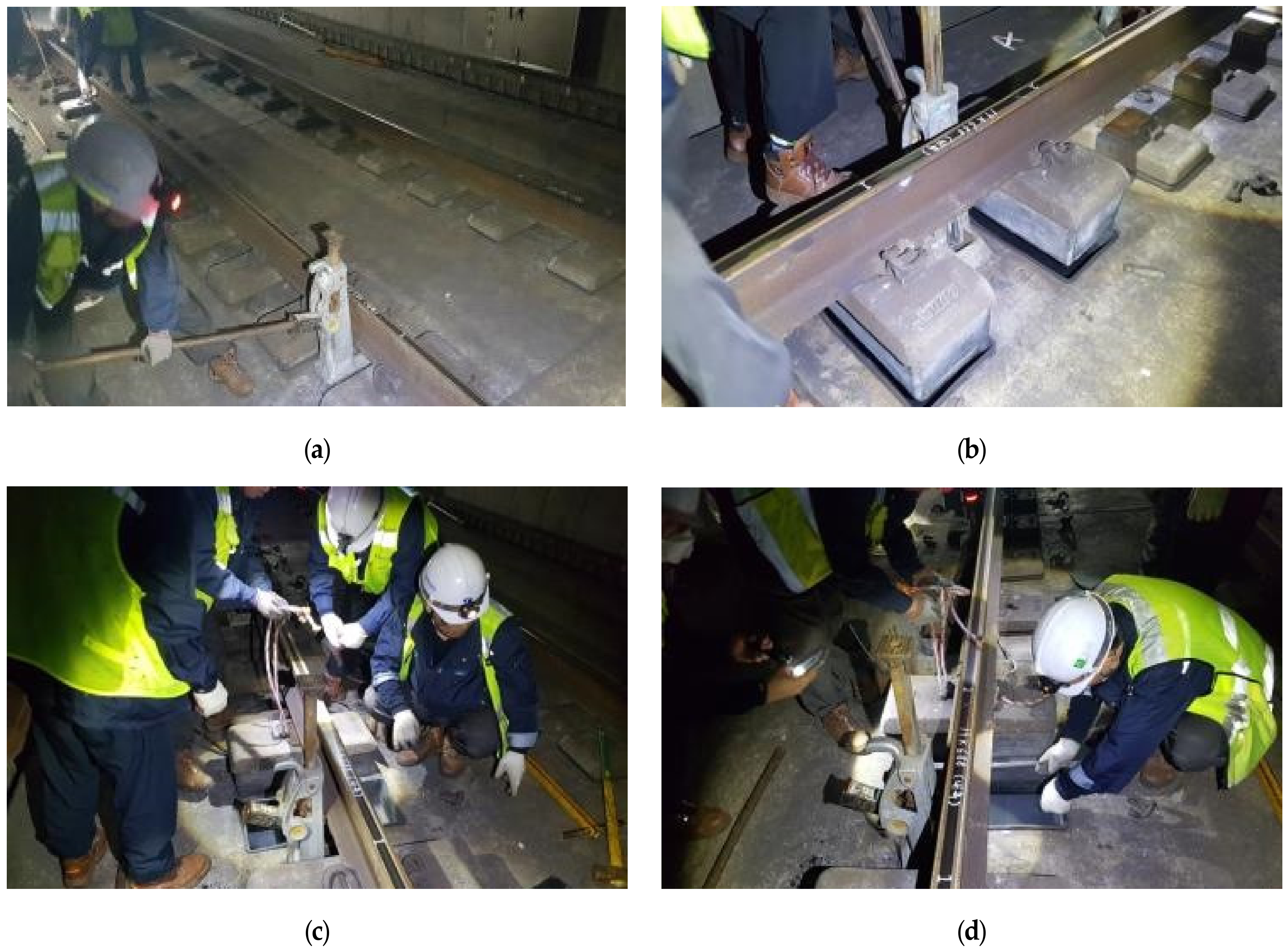
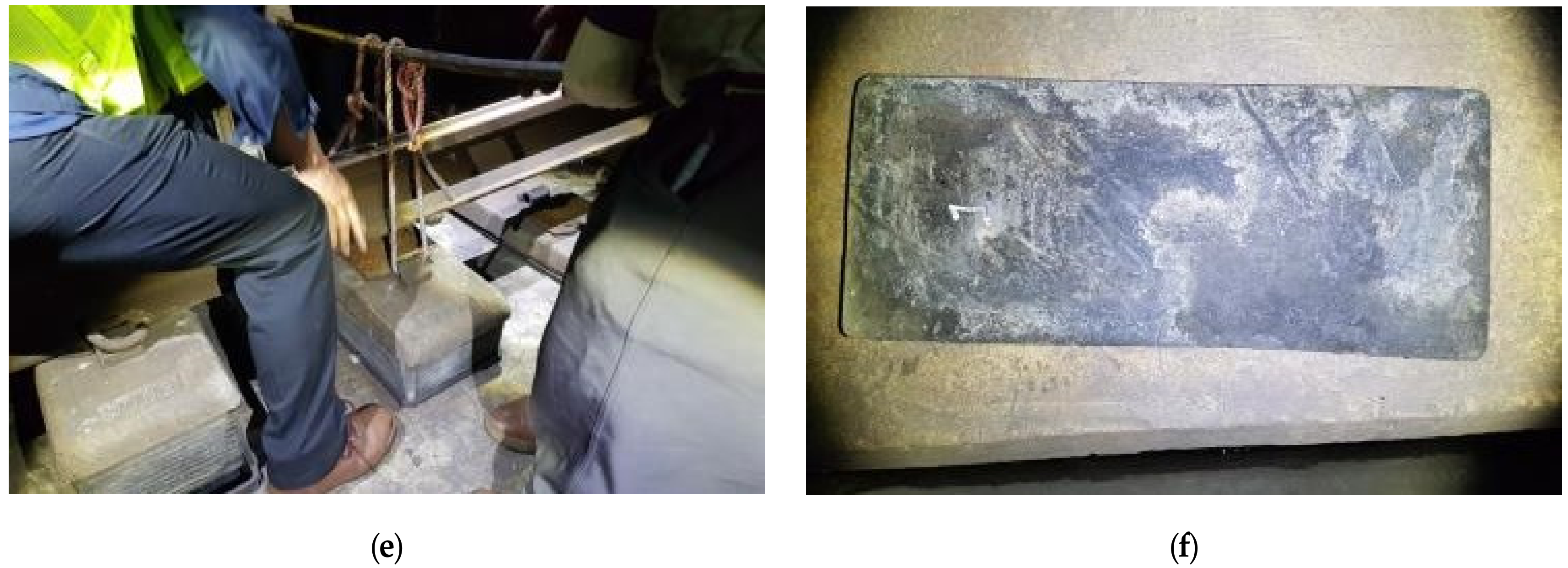
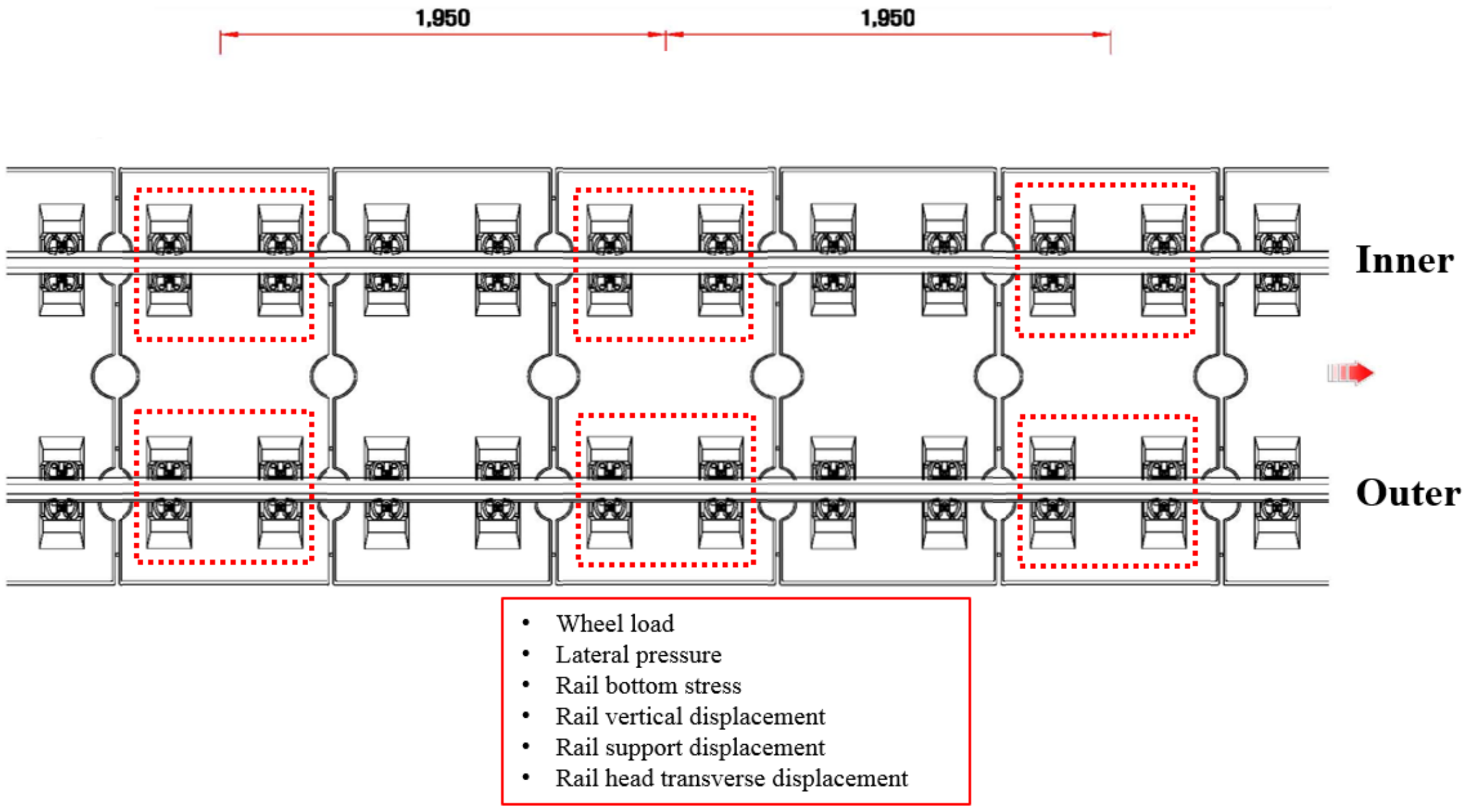
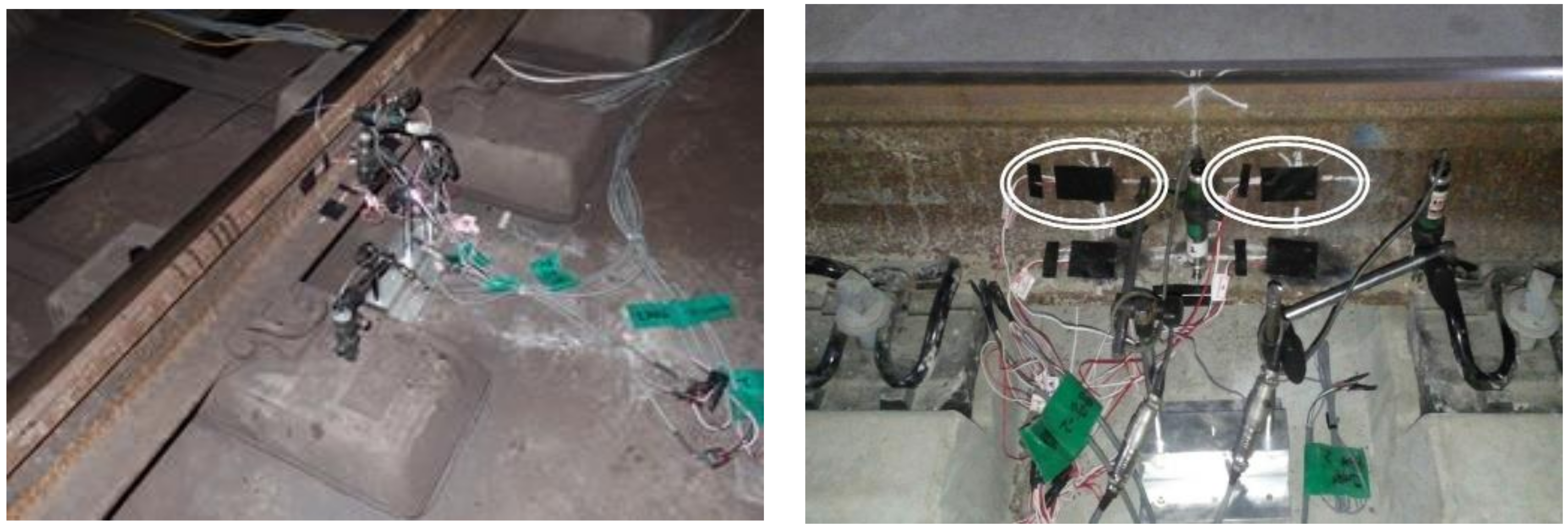
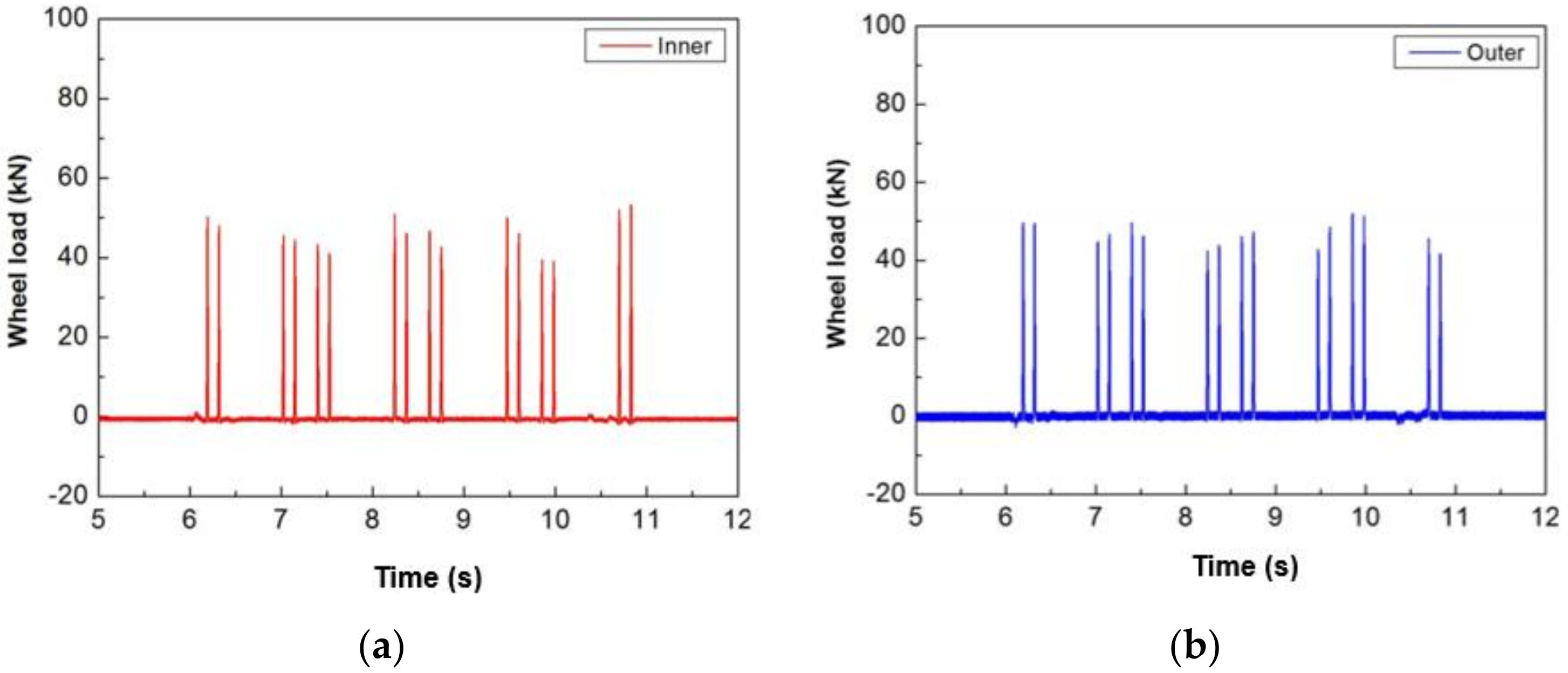
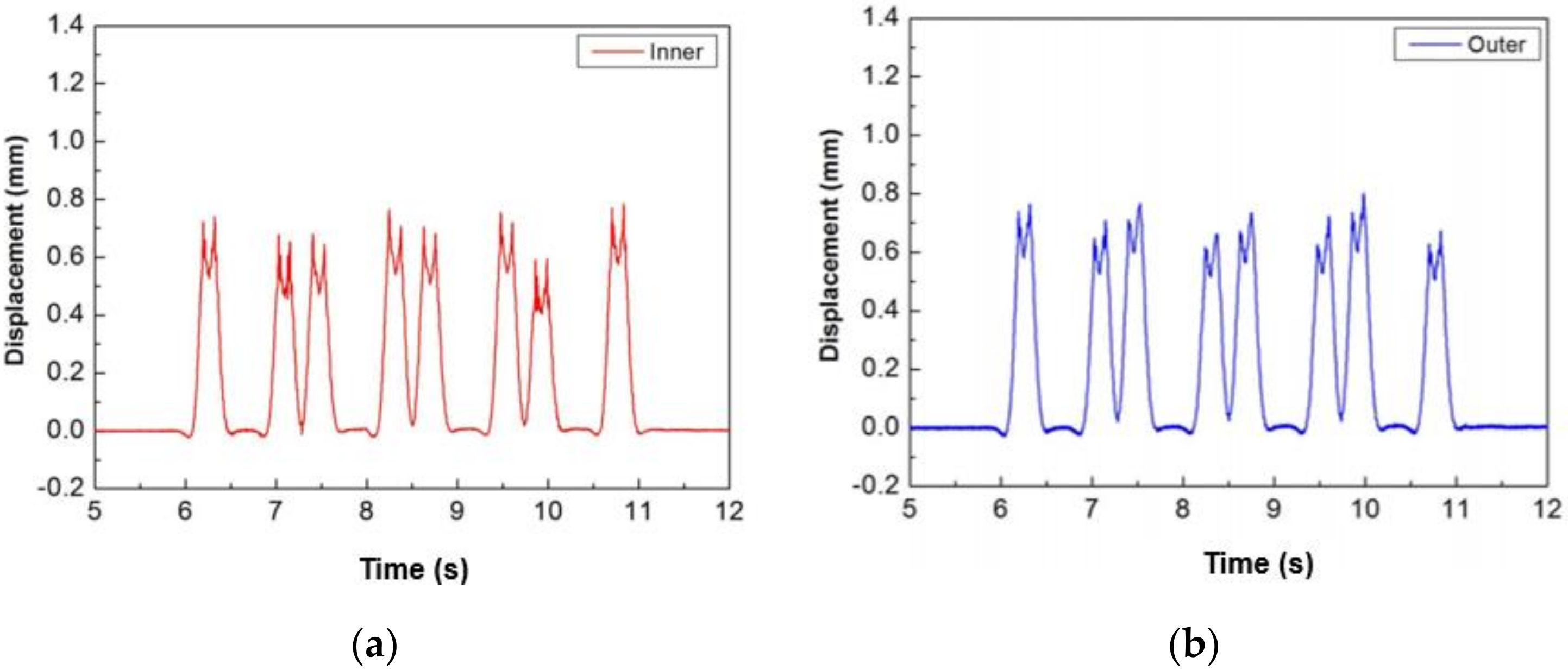
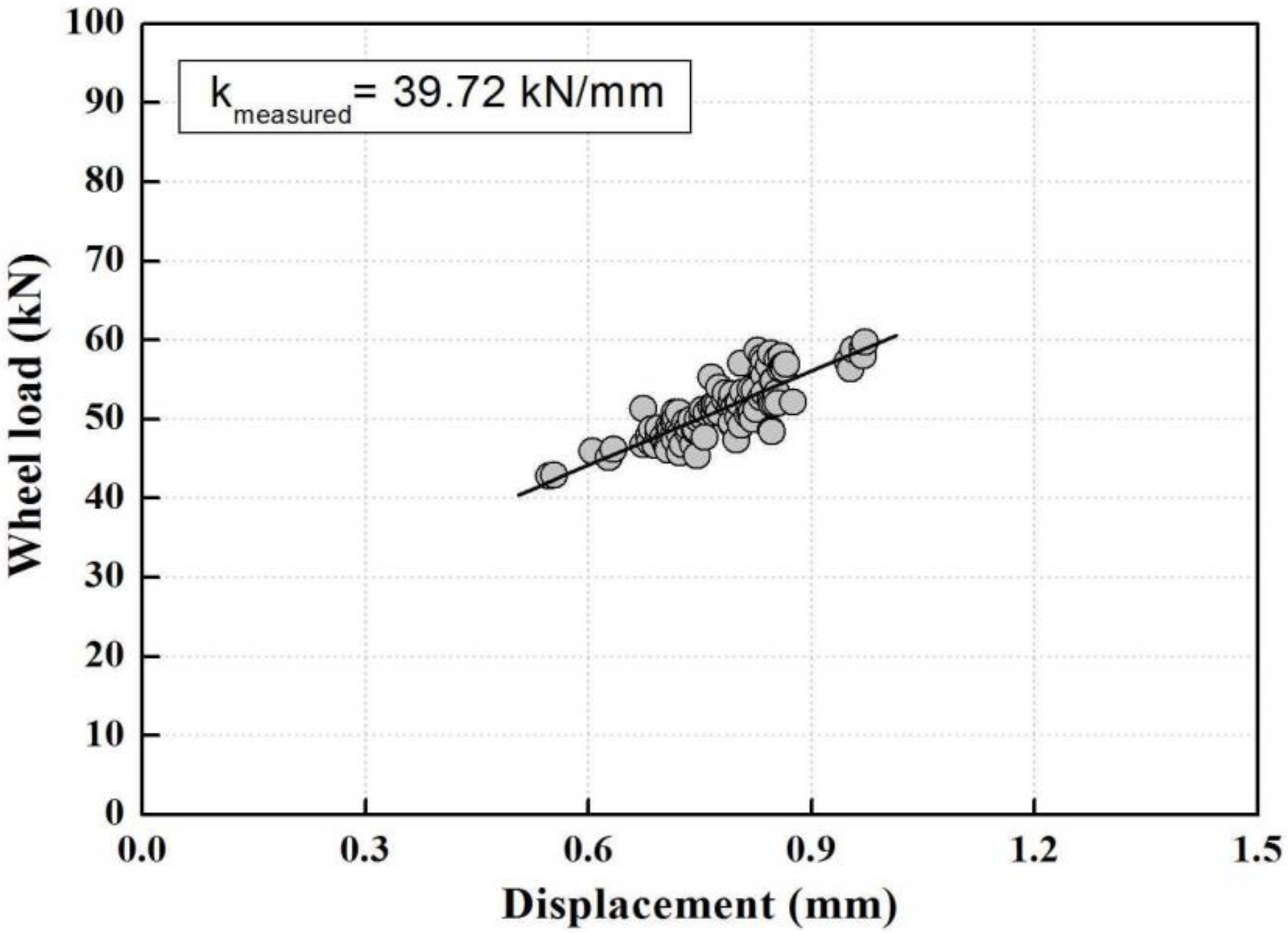
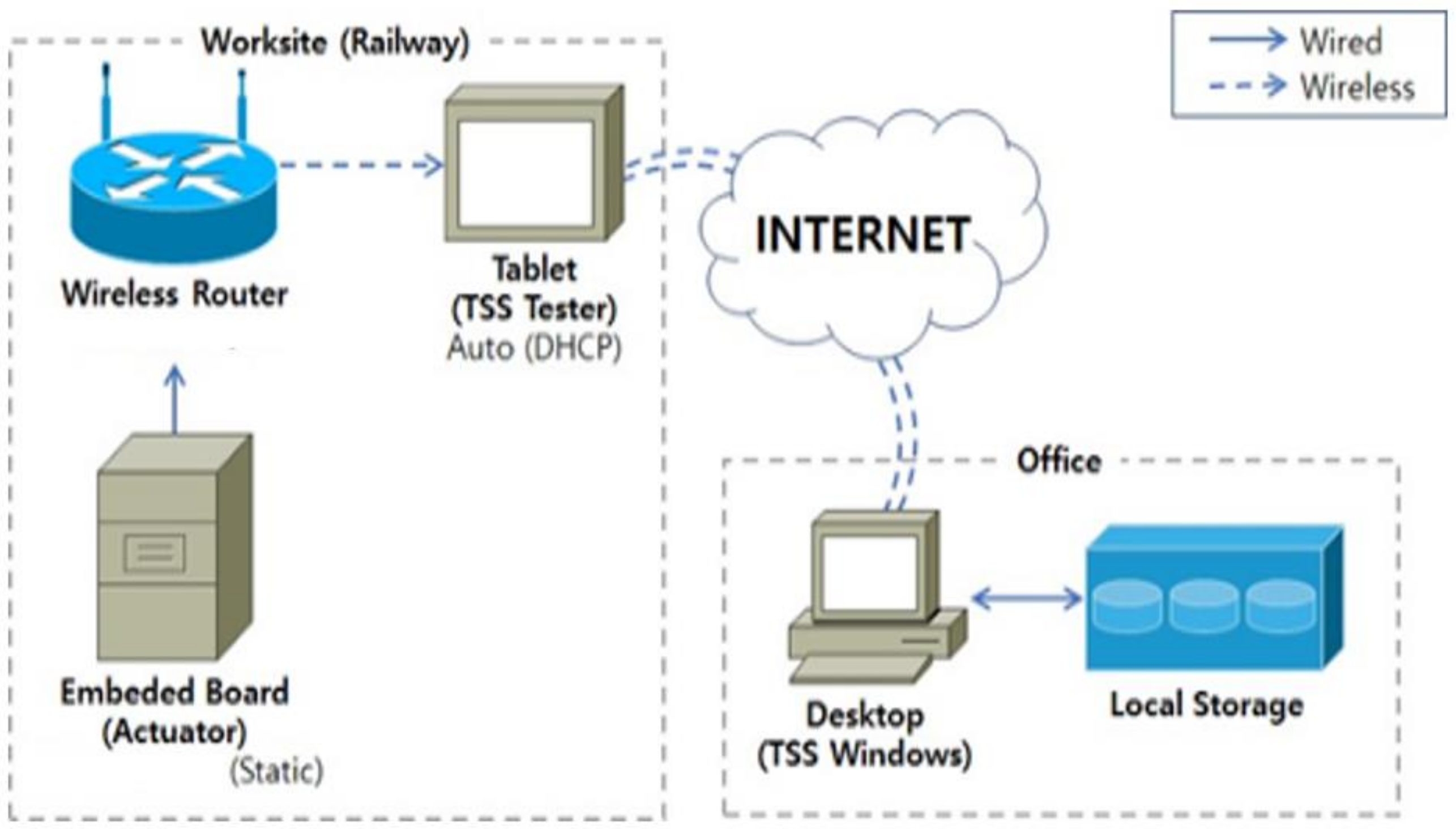
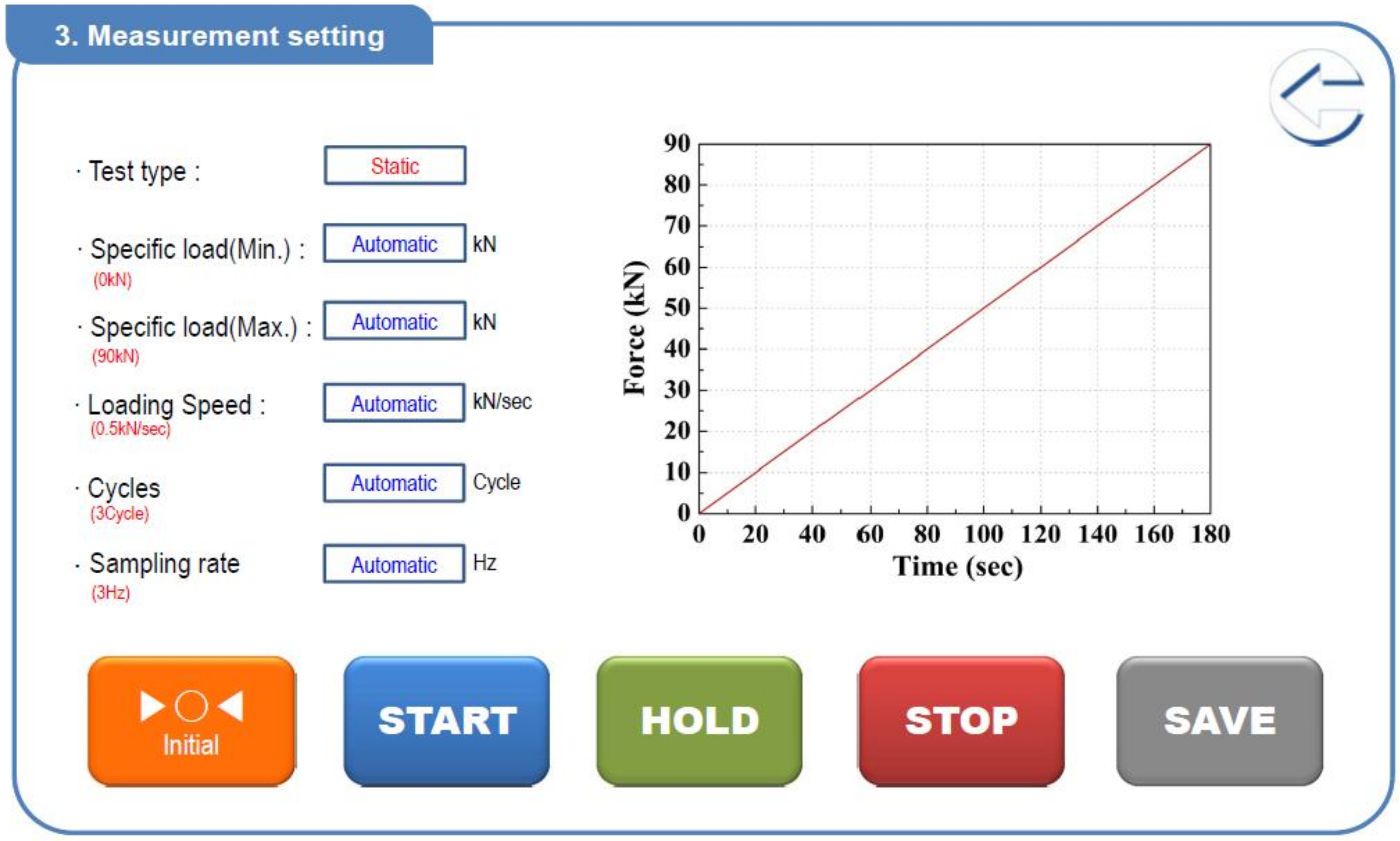
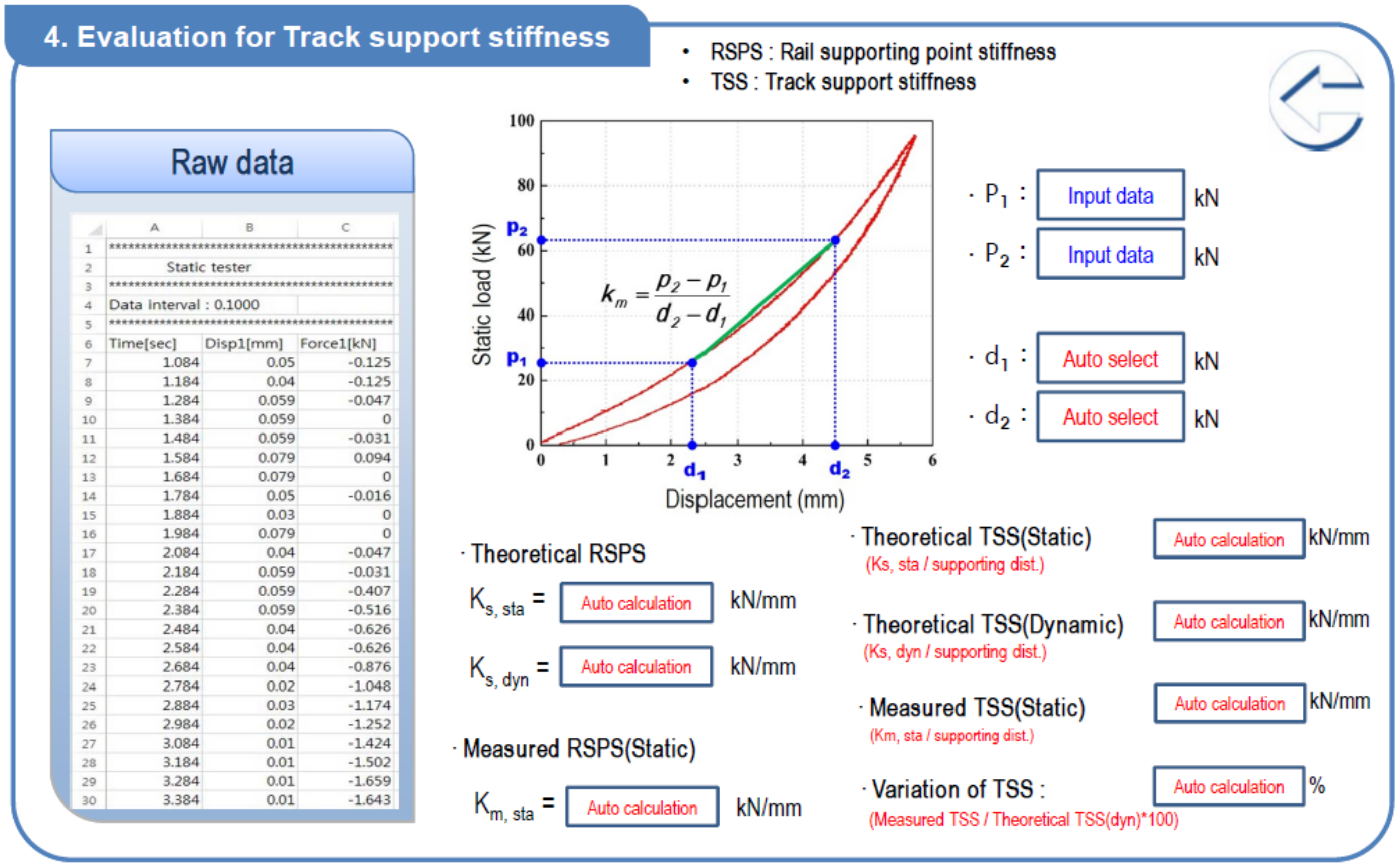
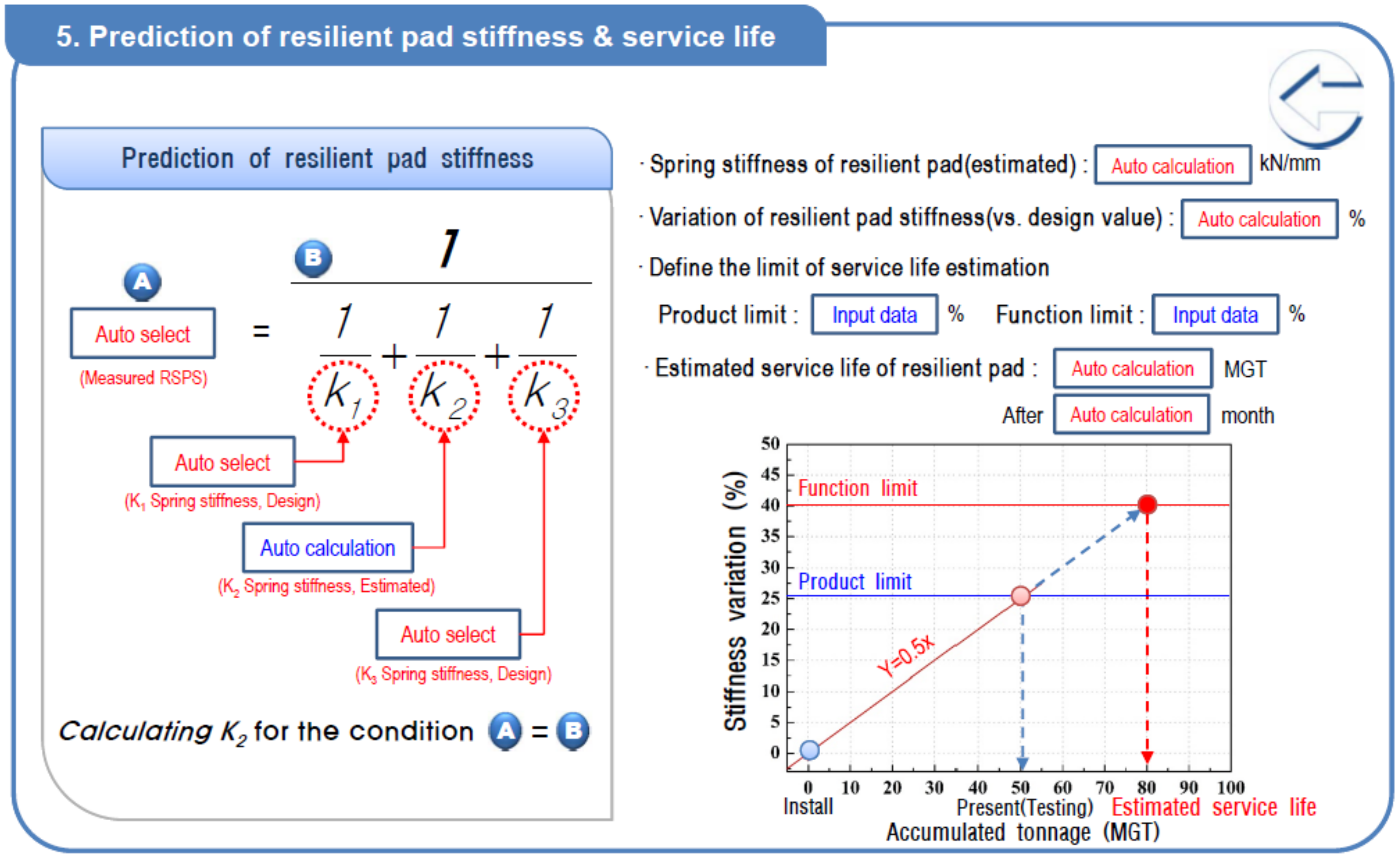
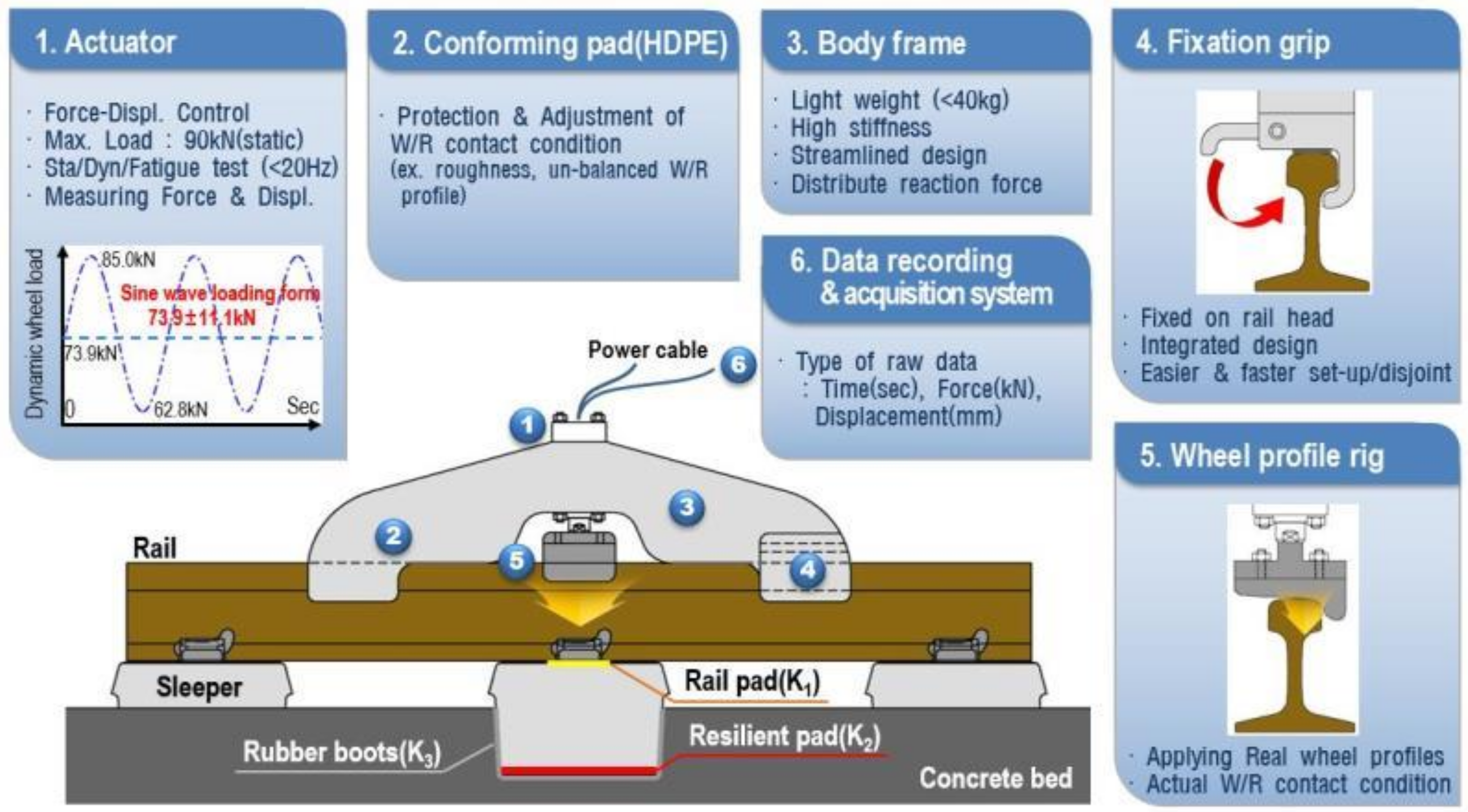
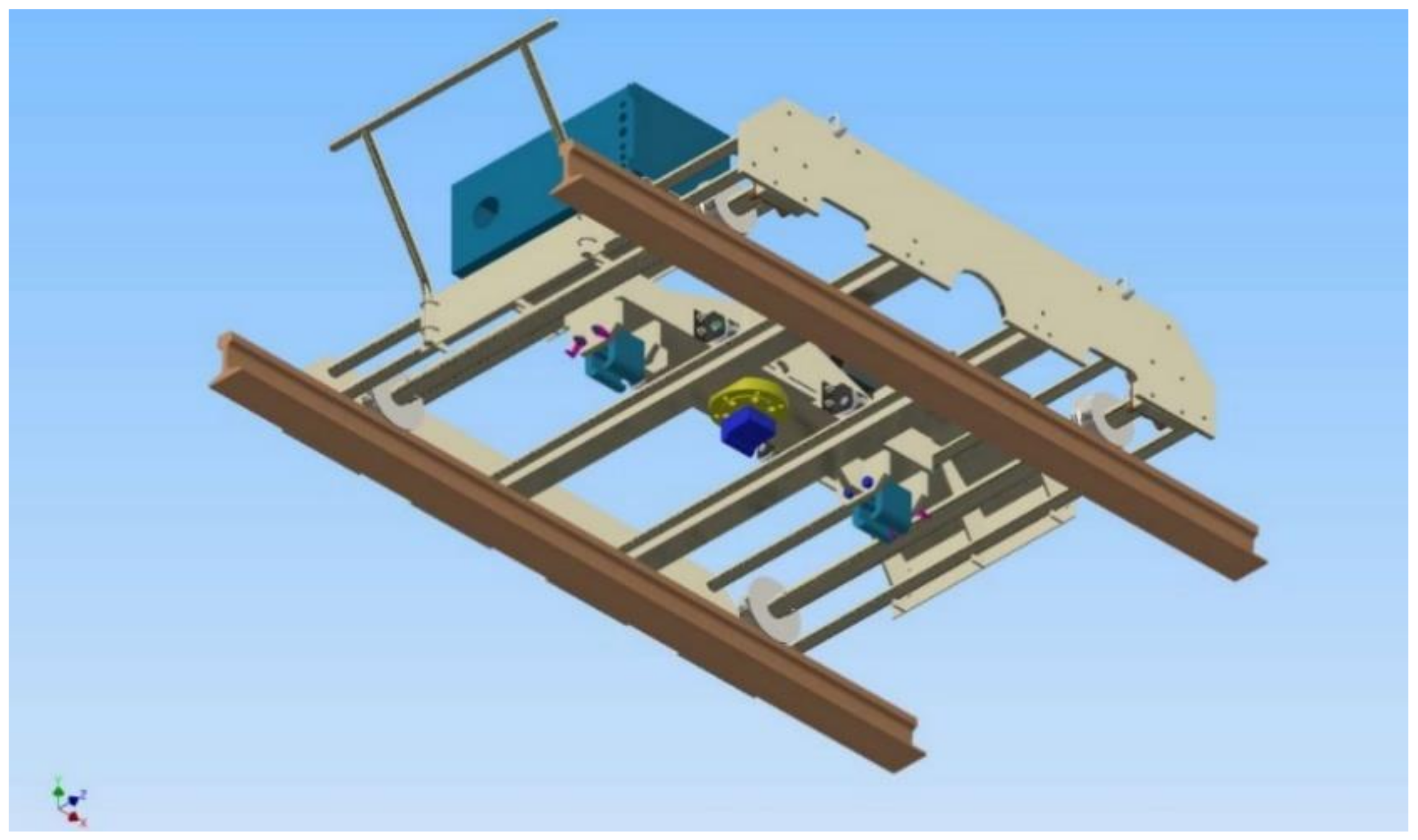
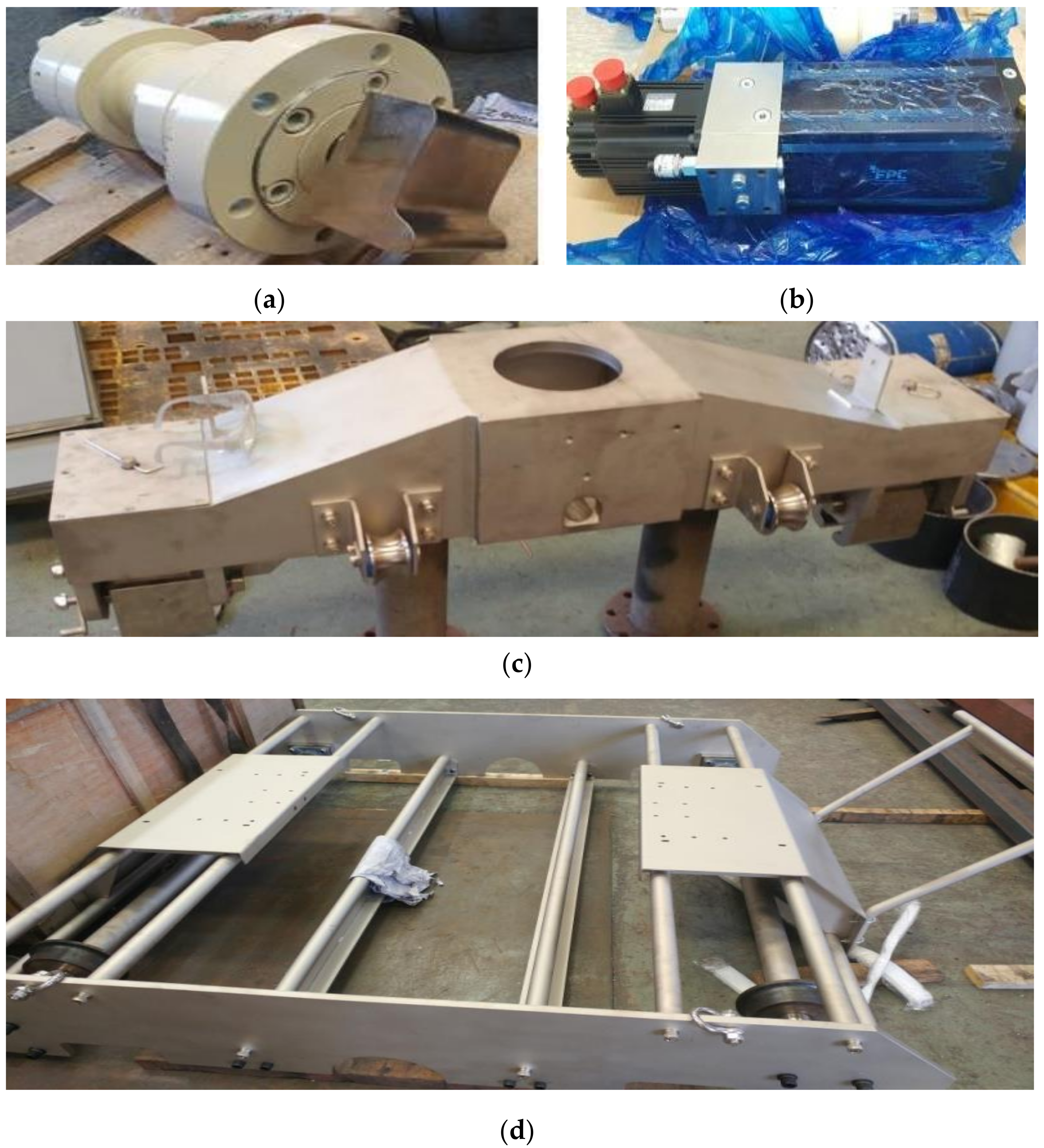
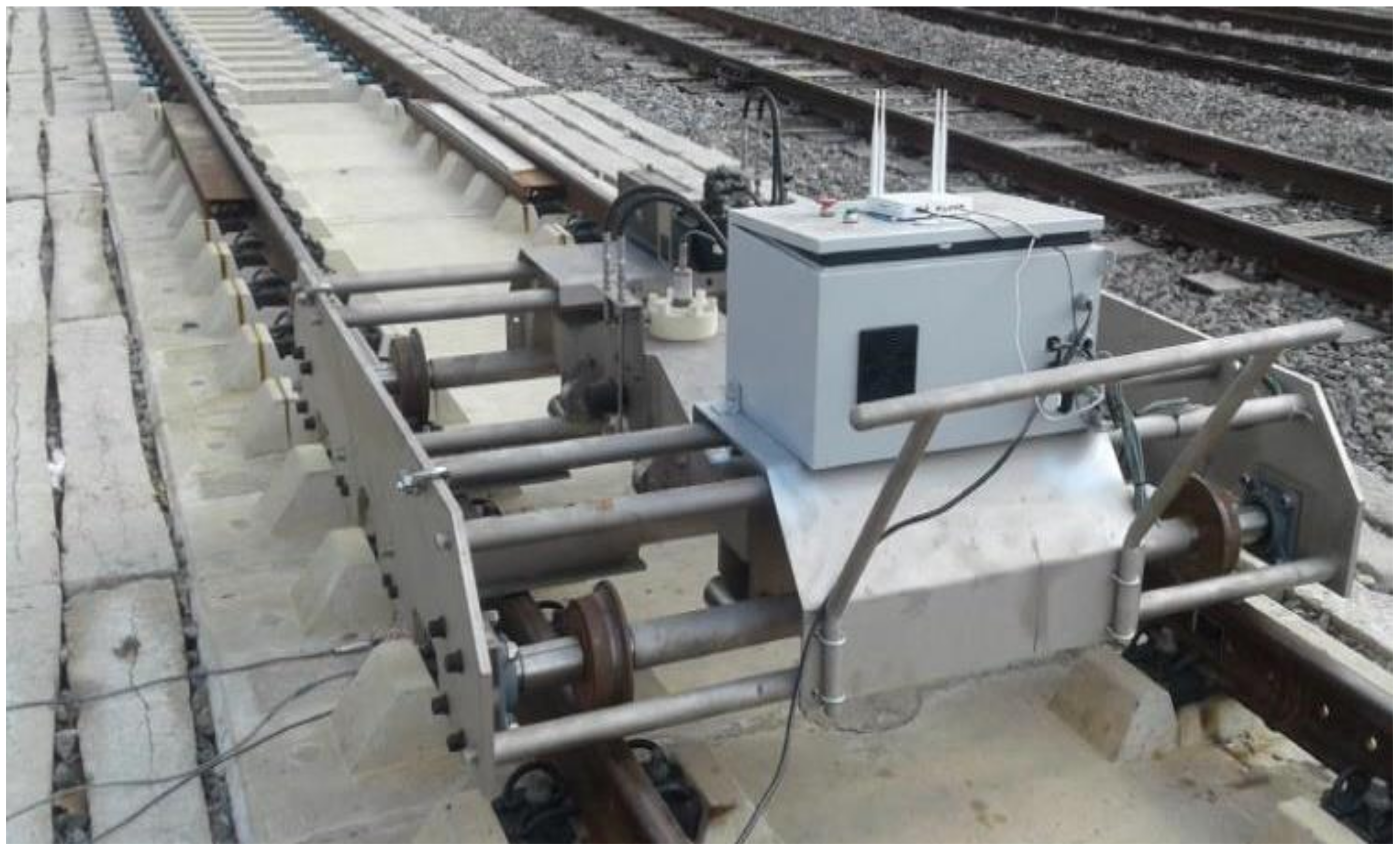

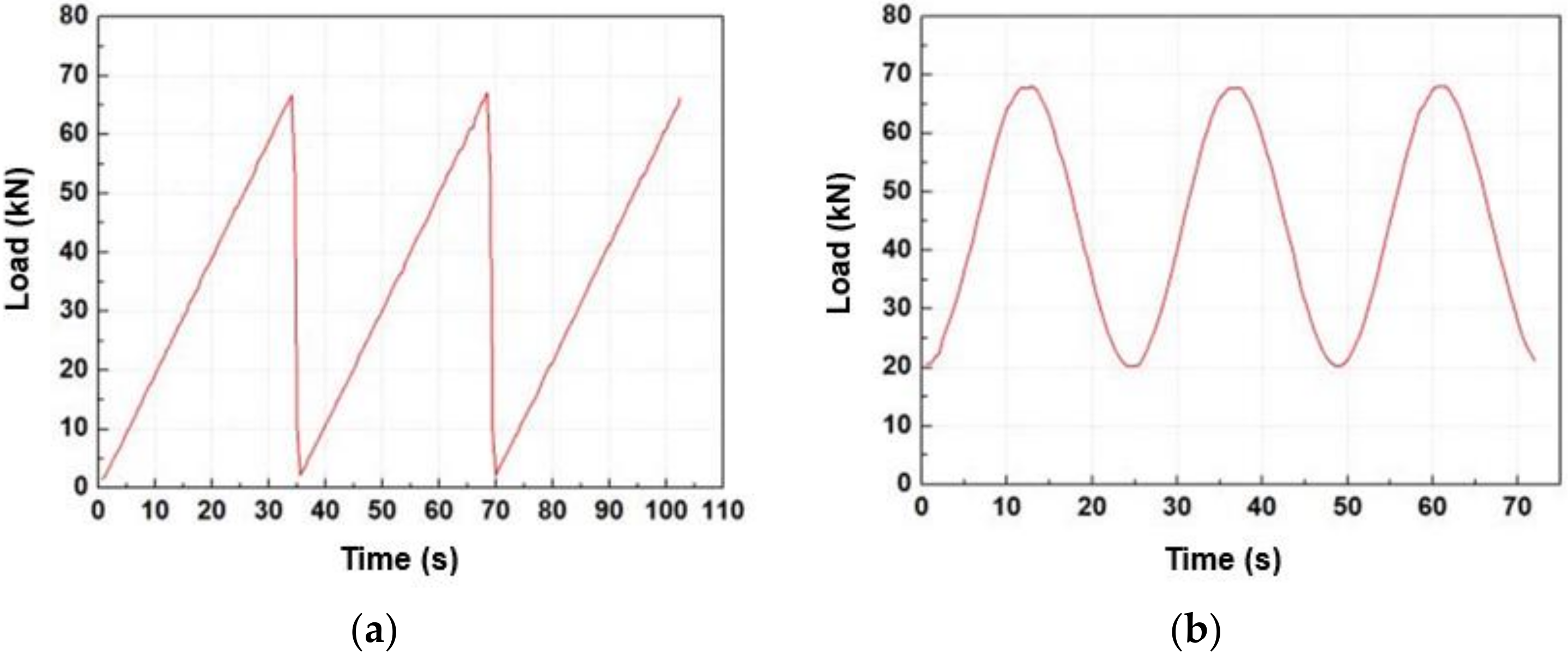
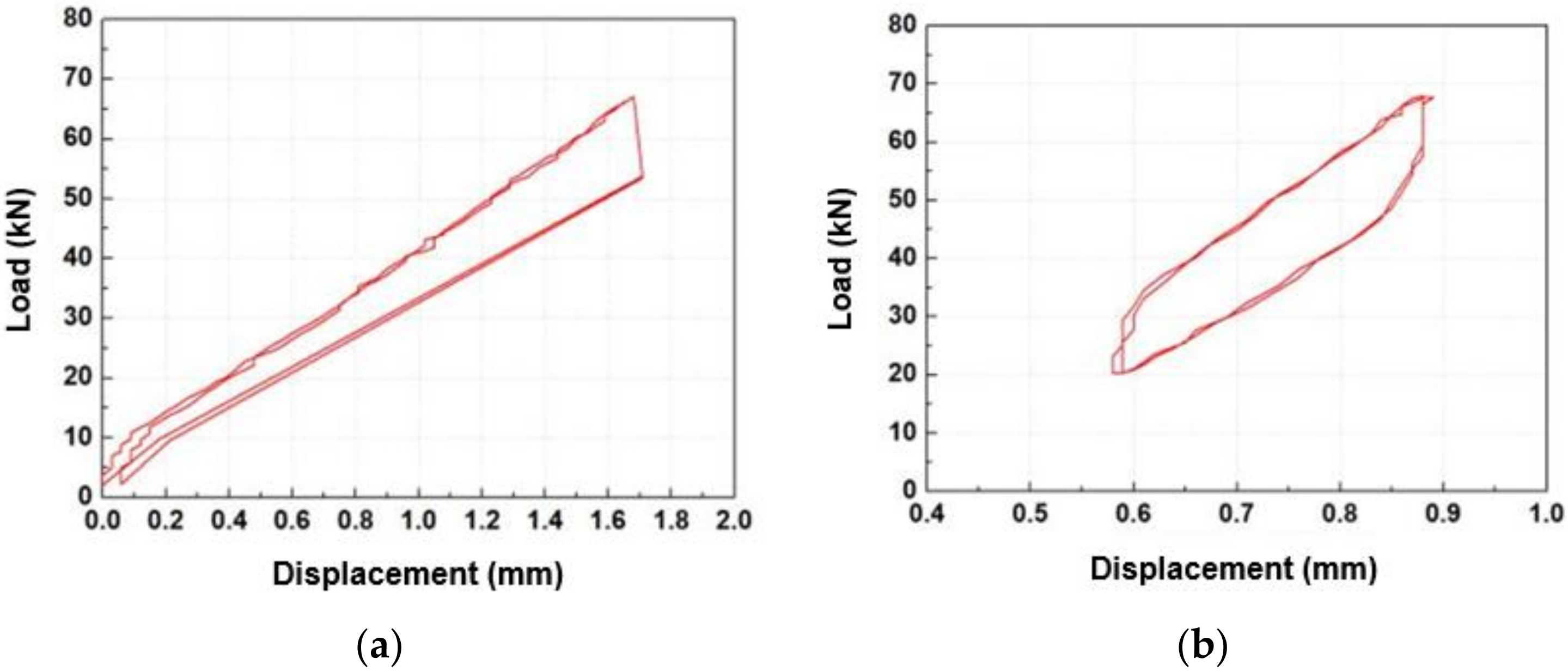
| Measured Results Using TSS Tester | Conventional Field Test Using Actual Vehicle | Design Value (Korean Standard) | ||||||||||
|---|---|---|---|---|---|---|---|---|---|---|---|---|
| Test Cycle | Static | Dynamic | ||||||||||
| A | * | B | A | * | B | A | * | C | D | * | C | |
| 1st | 15.43 | 34.87 | (−)2.09 | 17.10 | 38.41 | (−)0.23 | 17.72 | 39.72 | (−)3.50 | 17.5 (±2.5) | 40.24 | (−)4.79 |
| 2nd | 16.17 | 36.45 | (+)2.60 | 16.98 | 38.16 | (−)0.93 | (−)4.18 | (−)5.47 | ||||
| 3rd | 15.68 | 35.42 | (−)0.51 | 17.35 | 38.94 | (+)1.23 | (−)2.09 | (−)3.36 | ||||
| Ave. | 15.76 | 35.58 | 0.00 | 17.14 | 38.50 | (+)0.07 | (−)3.27 | (−)4.56 | ||||
© 2020 by the authors. Licensee MDPI, Basel, Switzerland. This article is an open access article distributed under the terms and conditions of the Creative Commons Attribution (CC BY) license (http://creativecommons.org/licenses/by/4.0/).
Share and Cite
Choi, J.-Y.; Kim, S.-H.; Kim, M.-H.; Chung, J.-S. Development of Track Support Stiffness Measurement and Evaluation System for Slab Tracks. Appl. Sci. 2020, 10, 4344. https://doi.org/10.3390/app10124344
Choi J-Y, Kim S-H, Kim M-H, Chung J-S. Development of Track Support Stiffness Measurement and Evaluation System for Slab Tracks. Applied Sciences. 2020; 10(12):4344. https://doi.org/10.3390/app10124344
Chicago/Turabian StyleChoi, Jung-Youl, Sun-Hee Kim, Man-Hwa Kim, and Jee-Seung Chung. 2020. "Development of Track Support Stiffness Measurement and Evaluation System for Slab Tracks" Applied Sciences 10, no. 12: 4344. https://doi.org/10.3390/app10124344
APA StyleChoi, J.-Y., Kim, S.-H., Kim, M.-H., & Chung, J.-S. (2020). Development of Track Support Stiffness Measurement and Evaluation System for Slab Tracks. Applied Sciences, 10(12), 4344. https://doi.org/10.3390/app10124344




